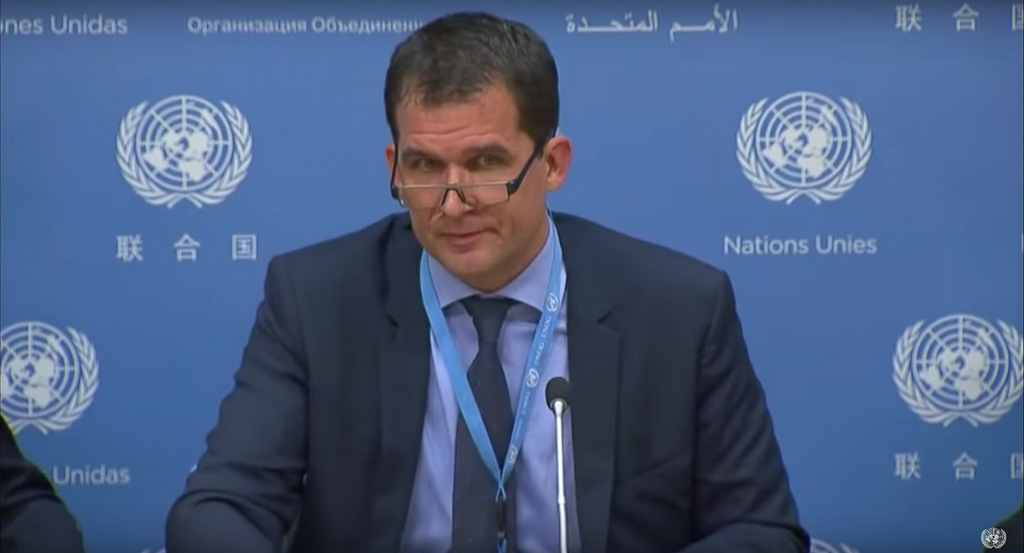ORIGINAL LINK
In February, I wrote an essay for Quillette about the Durkheimian witch-hunting taking place on the picture-sharing platform Instagram, and how it was affecting the thousands of knitters, designers, and businesses who rely on social media for their custom. My article described how a blogger and online craft store owner was denounced for writing an innocuous blog about her forthcoming trip to India, and how the yarn dyer Maria Tusken was then harassed and accused of complicity in racism for objecting to the mobbing. Businesses were chastised for their failure to be “truly inclusive” or for apologising too late when they had put a foot wrong.
Since my article appeared, things have only got worse. Kate Davies became the next target for abuse. A well-known designer, yarn vendor, and owner of her own brand of knitwear, she set up Kate Davies Designs after suffering a stroke at the age of 36, which ended her career as a literary academic. Davies is based in the Scottish Highlands, where she employs a small team of people and has won awards for sustainability. She is also a campaigner for disabled people, having had to cope with disability herself. One might assume that people committed to social justice would look elsewhere for enemies.
Her crime? In the aftermath of the “conversation,” as the campaigns to root out supposed perpetrators of racism was called, the topic of “white silence” became widely discussed. Designers and others with large followings who had hitherto failed to speak up about how they were confronting racism were now urged to do so, lest they contribute to the perpetuation of “oppression.” In a post entitled “A Letter on My Not-So-“Cozy” Doocot Sweater: aka My First and Last Kate Davies Project,” Helen Kim (@keinhelm4 on Instagram, who describes herself as an advocate for antiracism and an astrophysicist), wrote:
As more and more voices in the fiber community discussed their concerns about racism and lack of representation, I patiently waited for the designers I respected to do the same. Days went by, weeks, and yet I naively found myself wanting to give these makers the benefit of the doubt for withholding their views while they continued to advertise their products and snowy winters.
When Davies did speak out, her statement was denounced as “very harmful” by Kim. “Your words are demonstrations of entitlement to racial discomfort and racial arrogance (see Robin DiAngelo’s work on white fragility),” Kim declared. “White privilege,” she added, “is a white problem.”
Davies deleted her Instagram account, which had 75,000 followers, and posted a since deleted statement on her blog on 14 February. An archived copy of Davies’s statement was retrieved and reposted by Kim, along with her own critical commentary. Davies had written that “real change and real action can be best implemented by me outside a particular social media bubble—in promoting and amplifying the voices of BIPoC [Black, Indigenous, and People of Colour] in our community by taking forward projects in writing, publishing, and design that are explicitly antiracist and inclusive.” But she said she would not participate in finger-pointing or shaming on Instagram, and felt “deeply saddened” about being misrepresented and misunderstood.
It is my own political decision to choose not to speak from the particular social media script that has repeatedly been presented to me (with various level of demand); to carefully listen to marginalised voices rather than to shout; to not participate in acts of shaming and intimidation; and to refuse to engage with those who insist that the only way I can effectively demonstrate my antiracist solidarity is by continually displaying it in my Instagram stories.
Criticism mounted. Ysolda Teague, an Edinburgh-based knitting designer and owner of online knitting shop ysolda.com, weighed in, telling her followers that she would no longer stock Davies’s books. Davies then withdrew as a speaker from the Edinburgh Yarn Festival citing health reasons following a campaign led by Kim to have her disinvited. Kim, who was probably Davies’s most vocal critic, concluded a story entitled “Call Out” (which can be found at the top of her Instagram profile) with the following:
To those who worry about [Kate Davies’s] career and the impact her own reactions have caused her, perhaps you should consider that historically BIPOC have been the ones who have been wronged and oppressed. Ask yourselves: in what ways do you hold power? In what ways do you hold power over BIPOC? How have you been complicit in that structure of power? How do your actions, inactions, and privileges reflect systemic racism? How do you want to acknowledge the system and your complicity? […] KD actively SILENCED those who are different from her and tokenized them. That is called RACISM and DISCRIMINATION. As a white woman knitwear designer with over 75K followers and international renown, Kate Davies was NOT vulnerable. Rather, she was in a position of power.
In short, even though she is a disabled woman, Davies was a legitimate target because she is also white, straight, and middle class, and her business is thriving, which implies a degree of affluence.
Many of the influential activists on Instagram are academics. They draw on the work of scholars such as DiAngelo, the author of White Fragility, and recommend Me and White Supremacy by Layla F. Saad to those needing a lesson in “how to dismantle the privilege within themselves so that they can stop (often unconsciously) inflicting damage on people of colour, and in turn, help other white people do better, too.” Only by adopting the correct political views, espoused in precisely the correct jargon, can an accused person demonstrate to the satisfaction of her persecutors that she is now a “true ally” who has “done the work.” It’s all about as inspiring as it sounds.
Each fresh campaign would last a few weeks before moving on. Inevitably, some other company or individual would make some trivial but apparently unforgivable error, such as giving their pattern or yarn the incorrect name.
Madelinetosh Co. is America’s largest hand-dyed yarn producer, owned by Amy Hendrix. Her wool is sold in 800 independently owned yarn stores around the world. Their “Inclusivity” colourway was white, beige, brown, and black to reflect various skin tones, but it was pulled from sale after furious protests. In response, Hendrix posted the following note: “This yarn was developed by women of colour in our office together. We heard your concern and removed this colour from our site. All existing proceeds will be donated to the Martin Luther King Jr. Cultural Foundation.” In a follow-up post, Hendrix offered a more fulsome apology and explained why the colour had not been removed straight away: “Action was not taken sooner because I am indeed on a break working through a recent diagnosis of Multiple Sclerosis. I share this not for your empathy but only to explain why the colours were not removed. […] I stand with people of colour in the knitting industry, I stand with diversity.”
Hello. My name is Amy and I am the founder of Madelinetosh. I am sorry for the actions we have recently taken at our company. I have removed the colors courage, honor and inclusive from our website. I agree with the comments stating the color should not have been created for sale. I understand why people are upset, indeed it is not right to profit from a great man like MLK nor to profit on an idea related to racism and the struggle many deal with each and every day. Action was not taken sooner because I am indeed on a break working through a recent diagnosis of Multiple Sclerosis. I share this not for your empathy but only to explain why the colors were not removed and action taken sooner. To rectify the situation regarding the skeins sold we will be donating one hundred percent of the sales of these yarns to the Martin Luther King Jr.’s Cultural Foundation, a community based organization. On my views towards racism and the lack of businesses owned by people of color in the knitting industry I stand with diversity. I stand with people of color and any other struggle that limits a persons right to exist most especially during these hard times. Yet, actions speak louder than words. So we intend to show you how we will support groups like MLK’s and others in the future. As an additional note I would also like to apologize to the wonderful women within our office. I am proud of their hard work on this project and they are in no way responsible for how this unfolded. I take full responsibility for any lack of communication and I hope you will join with us in our future endeavors as we educate ourselves and work with others. Please note: We will continue to moderate and remove any comments using foul language, calling others names, using terms such as facist, nazis, holocaust, lynching and any other word intended to incite others from any source. We do not condone or support statements declaring white supremacy. Please know if you are posting this language in personal DM’s to others you do not speak on our behalf and never will.
A post shared by @ madelinetosh on Apr 15, 2019 at 2:07pm PDT
Needless to say, this did not satisfy her critics. @cdickdesigns, a knitting pattern designer with about 4,000 followers, said:
If a large company refuses to make a statement and refuses to moderate their own posts to protect people from vitriolic bigotry, and then make a colourway called “Inclusivity” it’s a straight-up fucking slap in the face for people like me and other people who are currently suffering in their private lives due to the pains we have shared publicly and openly.
It means that this “Inclusivity” colourway was developed solely for profit. It wasn’t created to help, educate or benefit anyone other than themselves. The colourway might as well have been called “All Lives Matter.” Right now, Madelinetosh is profiting from my pain. Madelinetosh has 95K followers and a following of cishetero white women who go into LYS [Local Yarn Store] and say things like “Do you have Madelinetosh? The only handdyed yarn I like is my Tosh!”
Laine magazine describes itself as a “high-quality Nordic knit and lifestyle magazine for knit folks.” A few months ago, it was criticized by Ysolda Teague, a stockist of Laine, for appearing to be…
…very white and that is extremely problematic. I appreciated how welcome lgbtq+ like me where [sic] in Laine, and I hoped they’d do better about representing POC. I made excuses to myself […] but I didn’t say anything because I didn’t want to upset the editors. That wasn’t good enough. I apologise for my silence. I’m taking my responsibility as a stockist, and as an advertiser and as someone who has been featured in Laine seriously […] I’m expecting to see changes, and I’m committed to supporting that, and being accountable if we don’t see it.
Then, a few weeks later, Laine magazine hired Ysolda’s fiancé, photographer Kate O’Sullivan, who is also a writer and social justice activist. O’Sullivan is white and this did not go unnoticed. “Six weeks ago,” wrote Kim…
…@ysolda posted in her stories heavy criticisms against Laine Magazine for not being inclusive of BIPOC. A couple of days ago, Ysolda’s partner, Kate O’Sullivan, announced that she had gladly accepted Laine’s offer to be their new regular photographer. […] In an ideal world, I would be able to ask: To what extent did Ysolda take advantage of her large platform, in voicing dissatisfaction, to allow someone close to her to personally gain from public criticism? […] Who gets to call themselves an ally and to receive the protection, and compensation, for that label? In an ideal world, no one.
Teague and O’Sullivan both posted grateful and self-reproachful replies to Kim. “Hi Helen,” O’Sullivan began, “thank you for once again holding this community to a high standard. You are right, my first commission for Laine was as a white woman. I pitched for somebody I knew I could interview nearby. This was back in Autumn as Laine publish biannually.” She explained that it was up to Laine to decide who to hire, and that she would put forward BIPOC designers for the magazine. She ended her comment by announcing: “I also wanted to be clear I’m private for our daughter’s safety as we had alt right pseudo journalists who live locally, targeting us this weekend over another issue.”
This sounds alarming. But it turned out that I was the “alt right pseudo journalist” in question. On Twitter on 19 February, I had pointed out that Teague and users on Ravelry.com, the biggest knitting community on-line, were participating in the hounding of Kate Davies, which had just erupted. I was then blocked by Teague and O’Sullivan. End of story. Nevertheless, if O’Sullivan’s tale was an attempt to solicit sympathy and alleviate the criticism she was facing, it met with some success. “I am sorry to hear that local alt right movement is threatening your safety,” a concerned @burrobird replied. “Please be safe.” Even Helen Kim thought it would be wise to step back in the light of this news. “I would like to reach out and apologize to @kateo_sullivan and @ysolda,” she wrote. “No one—NO ONE —should have to face threats and violence from alt-right supremacists. This kind of violence is sadly the reality of racism and white supremacy today, here in our very own community.”
It remains to be seen who will be the next object of the mob’s attentions. Sophia Cai (@sophiatron)—a Melbourne-based writer, curator and knitter and a friend of O’Sullivan and Teague—has begun compiling a list of local yarn stores and other knitting businesses which fall short of the standards of antiracism she expects from the community. She calls this list her “burn book”:
You might be surprised who is in this book. Many places with “inclusivity” statements or signs on doors or a token POC friend/employee/consultant. If there is one thing that unites yt [white] people it’s white fragility. To all the LYS and yarn businesses I have spent so much time speaking to over the last few months who still don’t get it. Who still think it’s a matter up for debate or further “consideration.” That’s fine. Take the time you need. I just won’t wait around for you. But maybe pay for the consultation and emotional labour.
Donations, she adds, can be directed to her Ko-fi account. A complete list of those included in her burn book can be obtained by messaging her, but they include “white feminists who don’t care about intersectional feminism,” “white feminists who are outraged by plastic straws but are quiet about white supremacy” and “people who don’t see colour or declare that ‘everyone is welcome.’”
These campaigns are risible, but they are also ugly. They license pettiness, cruelty, and ruthlessness in the name of causes they do nothing to advance. They threaten the businesses and livelihoods and professional reputations of good people struggling to navigate a dense web of ideological trip-wires. Everyone has to watch what they say lest an innocuous remark is seized upon as a new excuse to denounce and shame. And yet, this intolerable situation persists because everyone involved is silently complicit in the pretence that this is noble behaviour motivated by loving concern and righteous anger. It will only end when the revolution eats itself or when a critical mass of participants say, “Enough.”
Kathrine Jebsen Moore grew up in Norway, studied Media and Print Journalism in London, and worked at Bloomberg News until 2009, covering financial news, specialising in oil & gas and fishing. She now lives with her husband and four children in Edinburgh. She is a freelance writer and you can follow her on Twitter @moorjebsen
Photo by Kelly Sikkema on Unsplash
The post Instagram’s Diversity Wars Revisited appeared first on Quillette.
via
IFTTT




